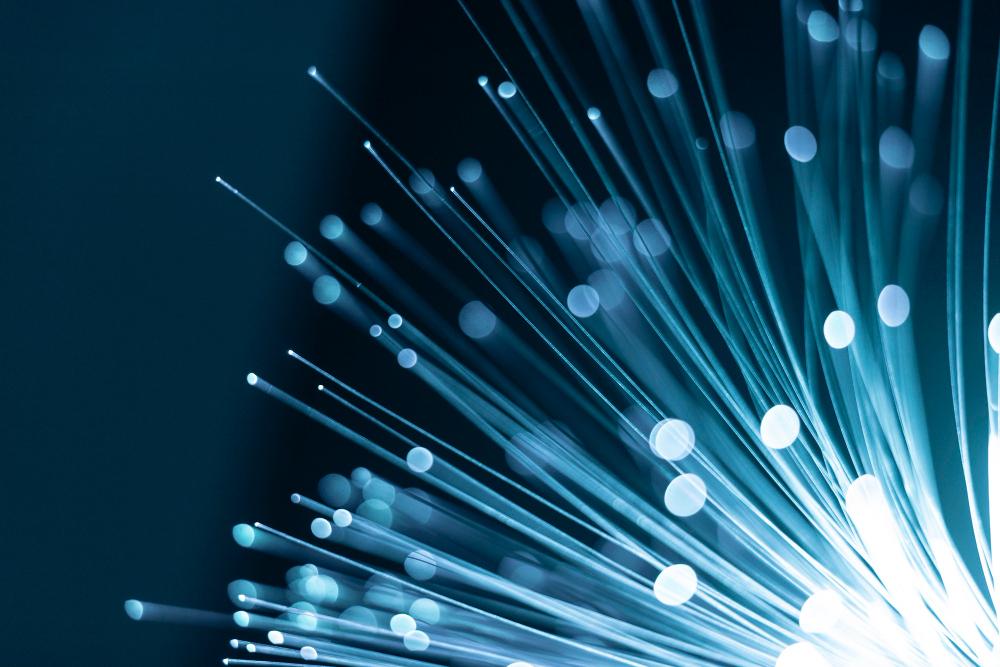Fiber Internet Service Providers: A Guide to High-Speed Internet Options

In today’s connected world, fast and reliable internet is essential. With the rise of smart homes, remote work, streaming, and gaming, many users seek the best options available for high-speed connectivity. One of the most popular and reliable solutions is fiber optic internet, a technology that has quickly gained traction for offering high-speed and consistent internet access. This guide explores fiber internet options, their benefits, and how they stand apart from other types of internet services.
What is Fiber Internet?
Fiber internet, short for fiber-optic internet, uses fiber-optic cables to transmit data. Unlike traditional cables, which use copper or coaxial wiring, fiber-optic cables use strands of glass or plastic fibers. These fibers transmit data as light, making them much faster and more efficient. The fiber optic technology can handle more data and with much lower interference than other cables, making it ideal for modern needs.
A fiber internet connection provides significantly faster download and upload speeds compared to other internet types. This allows users to easily stream high-definition videos, play online games without lag, and even conduct video calls without experiencing buffering or delays. It’s an especially appealing choice for households with multiple devices connected at once.
Benefits of Fiber Internet
Fiber internet is gaining popularity due to several key benefits:
1. Speed
-
Fiber internet is one of the fastest options available, with speeds that can reach up to 1 Gbps or even higher in some areas. This level of speed is especially beneficial for people who work from home, families with multiple users, and anyone who streams, downloads, or uploads large files.
-
Unlike other types of internet, which can slow down during peak hours, fiber internet tends to maintain consistent speeds.
2. Reliability
-
Fiber optic connections are much more resistant to interference than other types of internet. Copper and coaxial cables are vulnerable to electromagnetic interference, weather conditions, and physical wear, which can cause slower speeds or even outages. Fiber optic cables, however, are resistant to these factors, making fiber internet highly reliable.
-
Users are less likely to experience downtime with fiber internet, which is a major advantage for both business and personal use.
3. Lower Latency
-
Latency refers to the time it takes for data to travel from its source to its destination. Lower latency means faster response times, which is essential for gaming, video conferencing, and other activities where real-time data is crucial.
-
Fiber internet offers lower latency than cable or DSL, providing a smoother online experience with minimal lag or delay.
4. Scalability for Future Needs
-
With the growing trend of smart home devices, Internet of Things (IoT) gadgets, and 4K or 8K streaming, fiber internet is well-suited to support the future needs of internet users.
-
Fiber technology is capable of handling high data loads and is easily upgradable, ensuring users can keep up with advancing technology without needing to replace the entire infrastructure.
5. Better Signal Strength over Distance
-
Fiber optic cables maintain strong signal strength over longer distances, which is particularly beneficial for people who live in larger homes or multi-floor buildings.
-
Unlike DSL or cable internet, where speed decreases as you move further from the source, fiber internet retains its speed and performance across distances, making it more convenient for users spread across a larger area.
How Fiber Internet Works
Fiber optic technology operates by transmitting data as light signals through thin strands of glass or plastic. The speed of light, combined with the data-handling capacity of fiber optic cables, is what gives fiber internet its speed advantage. Each strand, about as thin as a human hair, is bundled together in a protective casing and is used to transmit data in the form of pulses of light. This method minimizes interference, and since light travels incredibly fast, data transfer occurs at exceptionally high speeds.
The setup for fiber internet differs from other types of internet. Typically, a fiber network will extend from the main service hub to a neighborhood distribution point. This is often called Fiber to the Home (FTTH) or Fiber to the Premises (FTTP), where fiber extends all the way into the user’s home. Some installations use Fiber to the Curb (FTTC) or Fiber to the Node (FTTN), where fiber lines reach a point close to the user’s location and connect to other types of cables for the last stretch. FTTH and FTTP are generally preferred for their superior speed and reliability, but availability may vary.
Comparing Fiber with Other Internet Options
Fiber internet stands out from DSL, cable, and satellite internet in several ways. Here’s a comparison of fiber internet with these other options:
-
DSL (Digital Subscriber Line):
-
DSL uses existing telephone lines to transmit data. While it's generally affordable and widely available, it offers lower speeds than fiber and can suffer from interference.
-
DSL speeds tend to max out around 100 Mbps, much slower than fiber internet’s potential speeds.
-
Cable Internet:
-
Cable internet uses the same infrastructure as cable TV services. It’s faster than DSL and widely accessible, but speeds may vary based on how many users are online at the same time.
-
Cable internet can reach speeds similar to lower-tier fiber options but often struggles with speed consistency.
-
Satellite Internet:
-
Satellite internet is ideal for rural areas without access to other forms of internet, but it is slower than fiber and comes with high latency due to the distance data must travel to reach satellites in orbit.
-
Fiber internet is a clear winner for speed, reliability, and cost-effectiveness in areas where it’s available.
Fiber Internet Availability
Fiber internet service provider availability depends on the infrastructure in your area. Rural areas, in particular, may have limited access to fiber, while urban areas tend to have more options. Governments and private companies are increasingly investing in expanding fiber networks, so access continues to grow.
If you’re considering switching to fiber internet, checking availability is the first step. Many providers have tools on their websites that allow you to enter your address and check if fiber service is offered in your area. New construction areas or those that recently received infrastructure upgrades are more likely to have access to fiber networks.
Cost of Fiber Internet
Fiber internet generally costs more than DSL or cable services due to the advanced infrastructure and technology involved. However, the benefits of higher speeds, better reliability, and lower latency often justify the higher price. Many fiber internet options offer a range of plans based on speed tiers, so users can select the package that best meets their needs and budget.
While initial installation fees may also be higher, some providers offer deals or discounts for new customers, making it worth exploring all available promotions. For households that rely heavily on the internet for work, streaming, or gaming, fiber’s performance can make it a cost-effective choice over time.
How to Choose the Right Fiber Internet Option
When choosing the best fiber internet, here are some key factors to consider:
1. Speed Requirements
-
Assess your household’s internet needs. For instance, a single user with moderate usage may not need gigabit speeds, while a family of gamers and streamers may benefit from higher speeds.
2. Data Limits
-
Some plans come with data caps, although many fiber options offer unlimited data. If you consume a large amount of data through streaming, gaming, or remote work, opting for a plan without data limits can be advantageous.
3. Price and Contract Terms
-
Compare pricing for various plans and check for any long-term contract requirements. Some companies may offer discounts for signing a contract, while others might allow for month-to-month options without long-term commitments.
4. Customer Support and Reputation
-
Research reviews from current customers and consider the level of customer support offered. Reliable support can make a difference if you experience issues or need help with installation.
The Future of Fiber Internet
The demand for high-speed internet will only increase as technology continues to evolve. Fiber internet is well-positioned to meet this demand, especially with the rise of technologies like virtual reality, telehealth, and 4K streaming. Companies and governments worldwide are investing in fiber infrastructure, aiming to make fiber internet accessible to more people.
The future may even see fiber technology supporting 5G networks and enhancing mobile data performance, with fiber networks serving as the backbone for 5G cell towers. As internet needs grow, fiber is likely to become the standard for fast, reliable, and future-proof connectivity.
Conclusion
Fiber internet has established itself as the premier choice for those seeking high-speed and reliable connectivity. With unmatched speeds, lower latency, and resilience against interference, it’s ideal for households and businesses with demanding internet needs. While the cost may be higher than other options, the benefits of fiber internet make it a worthwhile investment for many users.





